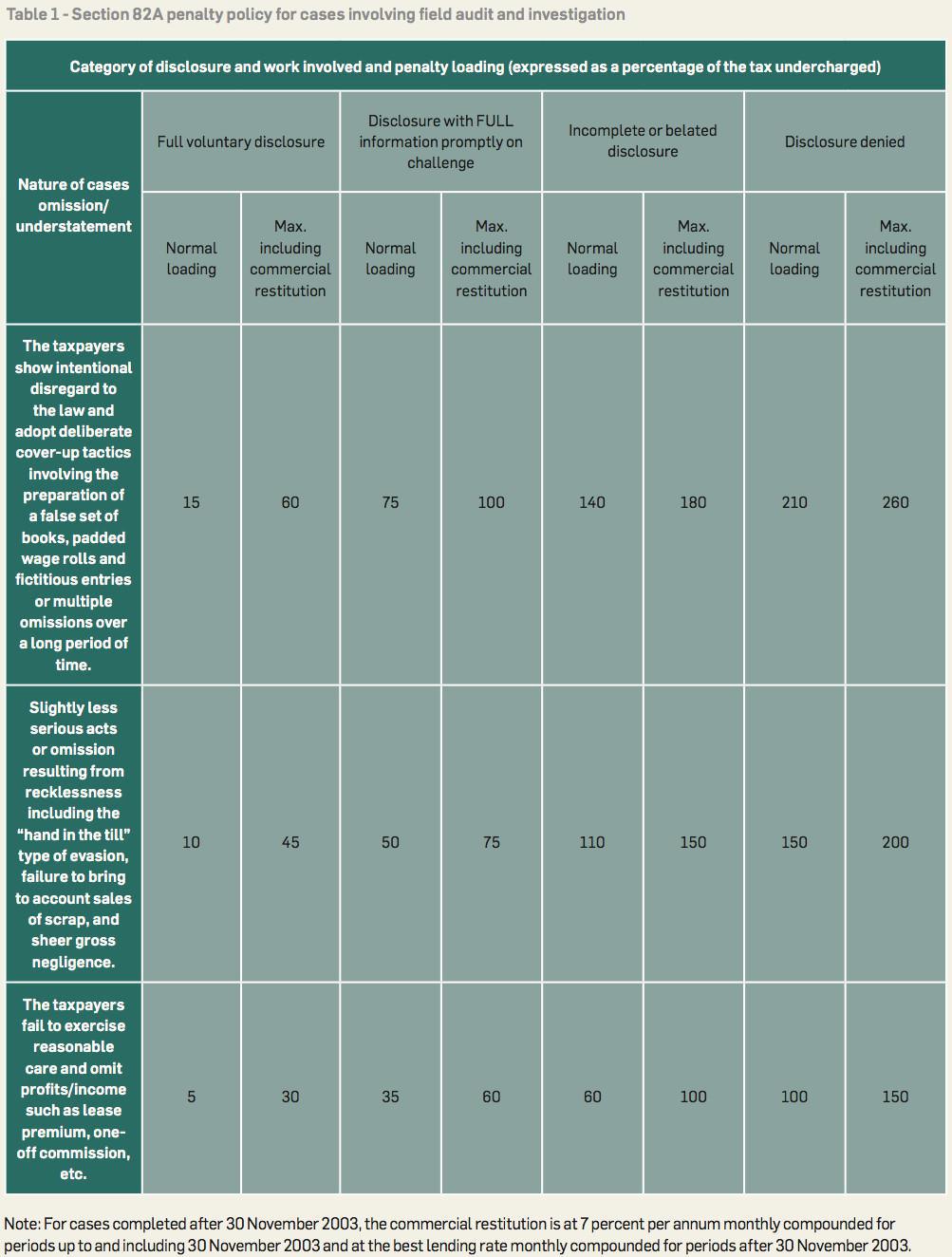Hong Kong prides itself on its low, simple and competitive tax system. Compared with other regions, meeting tax obligations is relatively straightforward. Managing tax however is not necessarily easy and cheap.
Generally, disputes between taxpayers (predominantly corporations) and the Inland Revenue Department (IRD) begin with requests for information, usually in the form of enquiry letters. Depending on the responses, these may evolve into tax audits and tax litigations, creating uncertainty about a corporations’ after-tax returns.
Tax disputes and tax risk management is now a common boardroom level discussion and demands significant senior management support and resources.
The mechanics
A Hong Kong non-individual taxpayer is typically required to file a profits tax return annually. Under the IRD’s “Assess First, Audit Later” approach, a taxpayer would generally receive an assessment and tax payment notice from the IRD as per the tax return filed. However, this is not the end.
These profits tax returns are then subject to a more detailed review by the IRD’s assessors. The IRD has become more sophisticated. It has a basket of tools and wealth of knowledge which are deployed to help it identify potential issues in returns and is empowered to revisit returns and request documentary evidence from taxpayers within a statutory time limit.
If the IRD consider they need further information to justify the tax positions taken, they will issue enquiry letters to the taxpayers which would generally contain a list of information requested. If the taxpayer determines that they do not have sufficient documentation to justify their tax position, they may choose to revise it at this time.
The onus of proof rests with taxpayers and is considered based on the balance of probabilities (as opposed to being beyond reasonable doubt, as would be required in a criminal case). Therefore, taxpayers are required to provide sufficient documentary evidence to support their tax positions.
It is important to respond to an IRD enquiry within the timeframe prescribed and notify them if there are any delays. The information provided should be relevant, succinct and accurate. Other than a taxpayer’s statutory and moral obligations, an incomplete or inaccurate response could trigger further questioning and/or may lead to an expansion of scope to other items in the tax return. Providing a detailed reply would be far more convincing and demonstrate that the taxpayer has maintained contemporaneous records.
This seems to be easy in theory but not in practice. With communications being digitized, it is unexpectedly easy to lose records – particularly if best-practice record keeping is not followed. For example, from the removal of email accounts following the departure of an employee. Also, the destruction of paper or electronic records due to unsuitable archiving policies can be problematic, as tax dispute cases can last a long time, and information may be requested beyond the statutory business record retention period.
For companies with complex tax positions – such as full or partial offshore profits claims and transfer pricing – IRD attention can be expected. The IRD’s enquiry letter would include a detailed information request list to best understand the taxpayer’s profits tax return and ensure there is sufficient justification for it. The IRD would look for evidence including contracts, travel records, transfer pricing reports, emails and correspondences, invoices and receipts, bank transaction records, etc.
These often end up being back-and-forth exchanges, which create significant workloads for the taxpayer’s finance and tax teams. In addition to the effort of recovering the historical records, taxpayers need to select what to submit wisely. As the IRD may also ask for details of commercial arrangements (or distinguish differences thereof) that the teams may only have limited knowledge, they will need to work with other business units to formulate replies to the IRD. Hence, the work pressure in effect stretches out to other parts of the business.
Tax audits and investigations
If the IRD identifies potential red flags in the initial review, a detailed review could be triggered. Common red flag indicators include:
- Long unsettled tax enquiries
- Fluctuations in financial positions
- Businesses involving largely cash transactions
- Publically available information which is inconsistent with the taxpayer’s representations in the tax returns and replies. Sources used by the IRD include listing prospectus, the internet and advertisements, and information from other tax authorities obtained through established exchange mechanisms etc.
Once potential cases are identified, a specialized team in the IRD will initiate the investigation process. These “Unit 4 cases,” named after the specialized team, typically involve a review of tax filing positions (including offshore claims, transfer pricing, etc.) and suspicious or incomplete records. The team is tasked with identifying non-disclosure of facts and information which led to tax under-assessment; excessive tax deductions of expenses through over-reporting or fabrication of deductible expenses.
A long history of tax enquiries and suspicious responses to IRD enquiries are also catalysts to tax audits. It is possible that Unit 4 officers would continue issuing enquiry letters to further probe a taxpayer’s tax position. There are also cases where the IRD would start a tax audit right away.
The IRD has laid down the procedures for tax audit and investigation cases in its Departmental Interpretation and Practice Note 11. Following this guidance, Unit 4 officers would propose beginning an investigation through an initial interview with the taxpayer. This interview would be with key personnel of the taxpayer including its directors, chief financial officer, finance and operational teams. The discussions and information collected during the interview help the IRD to paint a picture of the modus operandi of the business and – perhaps more importantly – a taxpayer’s tax governance framework (that is, how it manages its tax compliance and internal controls).
For the taxpayer, preparation for the initial interview is vital. By the time of an interview most taxpayers will already have an understanding of where the potential “softness” is in relation to their tax position. Preparing interviewees and having the relevant supporting documentation readily available is key for demonstrating to the IRD that the taxpayer can support their tax position.
A taxpayer has a relatively limited amount of time after the initial interview to voluntarily disclose any inappropriate or incorrect tax filing position taken in its tax returns. However it is usually difficult to perform a proper voluntary disclosure without some prior preparation and review. The advantage of doing so is that the IRD would leniently consider penalties.
Following the initial interview, the assessor would usually issue a series of requests to validate the information obtained during the initial interview. This is expected to be at least as onerous as the previous requests for information, and requiring much more details, such as raw accounting data, emails or other archived information. Taxpayers may feel that they are providing information that exceeds the on the balance of probability level.
According to the IRD’s statistics, most Unit 4 cases are settled on a compromise basis between the taxpayer and the IRD. This settlement will be based on sound technical grounds, supported by facts and common ground between the parties.
Depending on the IRD’s findings of the audit, they may impose penalties (see Table 1) and even imprisonment for more extreme cases. The severity of penalty would depend on the nature of the incorrect information provided, the taxpayer’s attitude and cooperation, and the time required to settle the case. The penalty could be up to 300 percent of the tax undercharged. For pure transfer pricing adjustments, penalties can be up to 100 percent of the tax undercharged.
Intentional under-reporting or non-disclosure of profits or over reporting or fabrication of expenses would generally trigger a high level of penalty to be imposed. In addition, taxpayer’s behaviour is also a key factor, for instance, if a taxpayer is cooperative and responsive, able to provide current records, contemporaneous transfer pricing documentation, etc. to substantiate its tax position, these would be helpful factors to defend against high penalty.
Tax litigations
If the IRD and taxpayers are unable to reach a common ground at the end of a series of enquiry letters and/or a tax audit, both sides could request the Commissioner of the Inland Revenue (commissioner) to make a determination on the case. The commissioner’s determination is the IRD’s final conclusion.
A taxpayer can lodge an appeal to the Board of Review for an independent review of the commissioner’s determination. The Board of Review is an independent body with a more flexible platform for taxpayers to contest against the commissioner’s determination. Rules including those in relation to admission of evidence and witnesses follow the court’s rules. The identity of the taxpayers is kept confidential even though the Board of Review publishes cases and decisions from time to time.
Taxpayers have the right to lodge objections to the Board of Review judgments with the Court of First Instance (or directly to the Court of Appeal). Tax litigations at court level is uncommon, primarily because costs are relatively high. Potential reputational impact is also a key consideration, as court judgments are published, disclosing the taxpayer’s identity. Taxpayers can choose to defend its tax positions all the way to the Court of Final Appeal – if they have the resources.
Tax risk and tax dispute management
Tax disputes can start from aggressive tax positions, but can also arise from unintentional errors or disclosures in the accounts or tax returns. Tax disputes may take years (or even a decade) to resolve, and the tax exposures for all years could crystallize at the same time, imposing cash flow pressure. The financial, resource and reputational impact as a result of tax disputes should not be underestimated.
Tax dispute management is a component of the wider tax risk management process and governance system that typically involves:
- Protection – A company should undertake a proper review and ensure adequate control of its tax return filing. Tax positions should be supported by robust technical grounds based on local legislation, with forward-looking insights from a global tax development perspective. This helps to establish a sustainable tax position. As tax disputes are always backward-looking and with the benefit of hindsight, it is important to document the prevailing thinking and rationale, and contemporaneous supporting documents to defend the position in anticipation of future challenges.
- Management – Tax disputes should be properly managed throughout the process. Disputes should be properly supported by internal stakeholders and senior management. Internal and external resources will be required to manage, respond and negotiate with tax authorities. A successful process is always a collaboration between external advisors and internal resources. Strong project management and coordination is vital in aligning interests and coordinating information collation across functions and jurisdictions. Managing stakeholders’ expectations and tax accounting implications are also important and thus appropriate tax provision should be made to cater for potential unfavourable outcomes. A more sophisticated approach for managing significant tax issues also involves engaging the appropriate parties to lobby for changes in tax laws or tax authorities’ views and assessing practices to secure certainty.
- Resolution – Resolving a tax dispute is often based on compromise and negotiation. There is always an uncertainty in the tax litigation process as even a perfect plan may fail for unpredictable reasons. Therefore, it is important to know your tax position and make timely informed decisions. This may include whether to pursue a compromise settlement or to litigate. It is important to use all available procedures and processes to help bring effective and efficient closure to your disputes.
There are certain processes and tools available to make sure the tax dispute management process is properly conducted. Management should consistently review its tax position based on the prevailing tax laws and developments. They should regularly revisit tax structures and make changes to operations and tax profile promptly in light of rule and operational changes. A periodic revisit of documentation can identify deficiencies, or data loss, which can assist management in taking remedial actions before it is too late – this is important as current documentation is one of the factors for mitigating severe penalties.
During the tax audit and resolution stage a constant reality check is key to help management to make an early decision to settle in order to avoid wasting resources and building up interest/penalties. Sufficient tax governance and controls can make sure matters are implemented as planned, and any exceptions could be identified, alerted and escalated internally at an early stage in order to take remedial actions. Technology can also ensure consistency and data retention.
Remarks
The tax landscape is changing – tax is becoming more transparent. The way tax authorities review tax returns is also changing. Tax authorities may have access to more information through public sources or from other tax jurisdictions. Tax authorities are also expecting more robust and timely information from taxpayers. Tax disputes are more challenging to handle as tax authorities have more information at their disposal, coupled with authorities’ increasingly stringent enforcement. Taxpayers should update themselves to prepare for tax audits by relying on technology.
Remember, tax disputes may occur at any time and preparation should not be a reactive “after-event” action, but an ongoing tax risk management process in anticipation of disputes arising at any time. Taxpayers should be prepared to face such challenge on a real time basis. Managing tax disputes not only requires additional budget and resources it also may impact the financial statements. Tax provisions may need to be included within the disclosures of the financial statements, thereby impacting the after-tax profitability of the taxpayer. Where the IRD is successful with a challenge, the taxpayer will also need to manage the impact to the cash flow and – perhaps more importantly – the potential reputational damage.
This article is co-authored by Alice Leung, Tax Partner, and Eugene Yeung, Tax Director, of KPMG’s Corporate Tax Advisory practice in Hong Kong.














